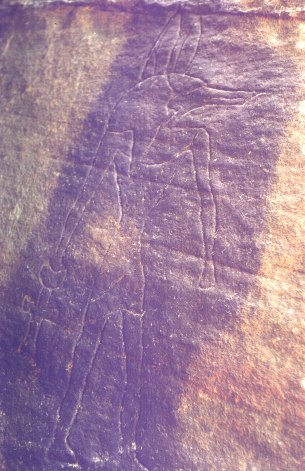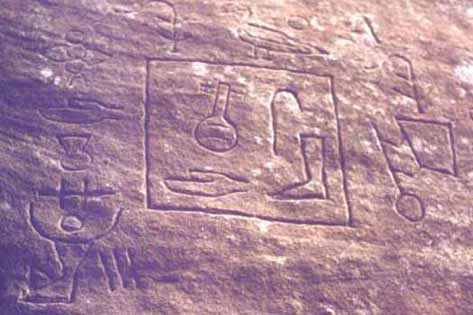It looks like you're using an Ad Blocker.
Please white-list or disable AboveTopSecret.com in your ad-blocking tool.
Thank you.
Some features of ATS will be disabled while you continue to use an ad-blocker.
share:
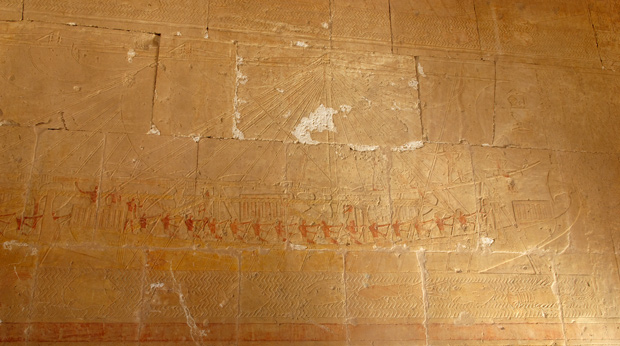
Egypt's Ancient Fleet: Lost for Thousands of Years, Discovered in a Desolate Cave
An ancient harbor on the Red Sea proves ancient Egyptians mastered oceangoing technology and launched a series of ambitious expeditions to far-off lands.
The scenes carved into a wall of the ancient Egyptian temple at Deir el-Bahri tell of a remarkable sea voyage. A fleet of cargo ships bearing exotic plants, animals, and precious incense navigates through high-crested waves on a journey from a mysterious land known as Punt or “the Land of God.” The carvings were commissioned by Hatshepsut, ancient Egypt’s greatest female pharaoh, who controlled Egypt for more than two decades in the 15th century B.C. She ruled some 2 million people and oversaw one of most powerful empires of the ancient world.
The exact meaning of the detailed carvings has divided Egyptologists ever since they were discovered in the mid-19th century. “Some people have argued that Punt was inland and not on the sea, or a fictitious place altogether,” Oxford Egyptologist John Baines says. Recently, however, a series of remarkable discoveries on a desolate stretch of the Red Sea coast has settled the debate, proving once and for all that the masterful building skills of the ancient Egyptians applied to oceangoing ships as well as to pyramids.
This is a fascinating but short read. Many have speculated and debated for years about just how much were the Ancient Egyptians seafarers. It seemed reasonable to me that if they were capable of building some of the greatest monuments known to man that they surely could have built a sea worthy craft not to mention a trading fleet and set sail off over the horizon. I mean they knew the stars and that's exactly what early seafarers relied on to navigate.
The question then becomes just how early did they first set out and how far did they travel?
Thought?
edit on 25-8-2012 by SLAYER69 because: (no reason given)
The discovery of an Egyptian Artifact filled cave below the rim of the Grand Canyon is beginning to make a little more sense with this discovery.
Great find thanks for posting.
reply to post by SLAYER69
Good find.
I wonder if their ships had limited range due to the limited cargo holds? Feeding the rowers would present a problem unless some crew members were assigned to fish. I doubt they could go outside the Mediterranean with that kind of ship and wearing summer clothes only.
Good find.
I wonder if their ships had limited range due to the limited cargo holds? Feeding the rowers would present a problem unless some crew members were assigned to fish. I doubt they could go outside the Mediterranean with that kind of ship and wearing summer clothes only.
reply to post by Agarta
I know about that one but my Spidey senses are starting to tingle...
Many over the years have stated that the Ancient Olmec artwork show signs of an "African connection" I wonder....
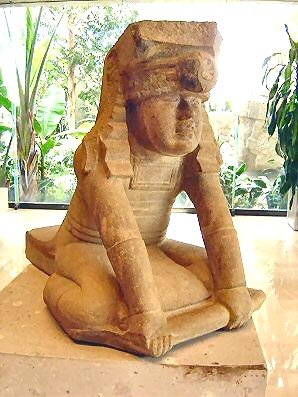
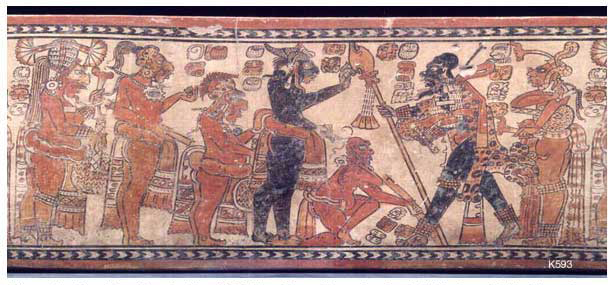
I know about that one but my Spidey senses are starting to tingle...
Many over the years have stated that the Ancient Olmec artwork show signs of an "African connection" I wonder....


edit on 25-8-2012 by SLAYER69 because: (no reason given)
reply to post by SLAYER69
Hey Slayer, I hate to do this to you and please don't take offense, but I went to find you some sources on the subject of my comment and found quite a few, so I decided to send you the Google link. We all know how large search links are, so in order to put a smaller link I used LMGTFY(sorry). The cave was found in 1909. lmgtfy.com...
Hey Slayer, I hate to do this to you and please don't take offense, but I went to find you some sources on the subject of my comment and found quite a few, so I decided to send you the Google link. We all know how large search links are, so in order to put a smaller link I used LMGTFY(sorry). The cave was found in 1909. lmgtfy.com...
reply to post by SLAYER69
Interesting! I wonder if the inscriptions say they are heading to the Land of Punt. Hatshepsut and kings from other dynasties have made expeditions to Punt, which is modern day Ethiopia/Eritrea.
*edit: Should of read it, rather than skimming it lol...guess they did.
Interesting! I wonder if the inscriptions say they are heading to the Land of Punt. Hatshepsut and kings from other dynasties have made expeditions to Punt, which is modern day Ethiopia/Eritrea.
*edit: Should of read it, rather than skimming it lol...guess they did.
edit on 8/25/2012 by IEtherianSoul9 because: (no reason given)
It would appear Egypt has much left to share with modern Man if we carefully look for it. They were awfully determined record keepers in the sense
we're still finding clearly identifiable wall art from so long ago. I wonder if they actually intended that this all last these millenia or if
they'd just intended their work to last generations or even centuries?
I really hope someday they get to finding things deeper beneath the sands and perhaps under some of the ruins so carefully excavated in the past century or so. Perhaps somewhere down there is just a simple record like 'The Life and Times of John Smith' which would simply lay out what various forms of living were like to the average guy on the street then. That simple kind of narrative would answer so much.
Until then, the discoveries like this whet the appetite for what it suggests may still be there to be found eventually and by someone down the road.
I really hope someday they get to finding things deeper beneath the sands and perhaps under some of the ruins so carefully excavated in the past century or so. Perhaps somewhere down there is just a simple record like 'The Life and Times of John Smith' which would simply lay out what various forms of living were like to the average guy on the street then. That simple kind of narrative would answer so much.
Until then, the discoveries like this whet the appetite for what it suggests may still be there to be found eventually and by someone down the road.
reply to post by lostinspace
Explanation: From page 2 of the article linked in the OP ...
Personal Disclosure: That is amazing! :
Explanation: From page 2 of the article linked in the OP ...
While the windfall of Mersa Gawasis artifacts has answered some questions, it has raised others. For instance, how did the expeditions to Punt actually work, and how did the Egyptians construct vessels that could make a round-trip voyage of up to 2,000 miles?
"From the very beginning, the Egyptians were building boats that could be disassembled, and that makes them different from anyone else. They were using the shapes of the planks to lock each of the pieces into place."
Squatting in the humid heat of one of the Mersa Gawasis caves, Cheryl Ward unwraps a huge chunk of cedar as thick as a cinder block. Salt crystals on the wood glitter in the light of her headlamp. Ward turns the block in her hands and explains that it was once part of a plank from a ship’s hull. From its width and curvature, she estimates the original ship would have been almost 100 feet long. “The size and magnitude of this piece are larger than anything we have for any [other] Egyptian ship, anywhere,” she says.
Ward, a maritime archaeologist at Coastal Carolina University in Conway, South Carolina, spent three years building a full-scale reconstruction of a ship that would have docked in the lagoon of Mersa Gawasis. Ward has determined that unlike modern vessels, which are built around a strong internal frame, the Egyptian ship was essentially one giant hull. The curious construction meant that the craft required much larger timbers for strength. The wood was also cut thicker, with enough extra width to compensate for damage by shipworms. Some of the ship parts preserved in the Mersa Gawasis caves are more than a foot thick. “One of the features of Egyptian architecture is overbuilding,” Ward says. “You can see similar safety features in the construction of these ships.” Ward’s archaeological experiment needed 60 tons of Douglas fir as a stand-in for the Lebanese cedar used by the ancient Egyptians.
The Egyptian ships were also unique in that they were held together with mortise-and-tenon joints, tab-and-slot fittings that needed no metal fasteners and could be taken apart and put back together again. For added strength, the individual timbers were carved with curves that nested into adjacent parts, a little like puzzle pieces. “From the very beginning, the Egyptians were building boats that could be disassembled, and that makes them different from anyone else,” Ward says. “They were using the shapes of the planks to lock each of the pieces into place.”
Personal Disclosure: That is amazing! :
edit on Sat Aug 25 2012 by Jbird because: changed quote tags to ex tags
reply to post by SLAYER69
I'd think those in New South Wales have been debunked and accepted as being very recent.
Link to copy of article on this.
I've seen other posts on it in the past where it was called a hoax or just decorations made recently (1980's).
I have little doubt though it is entirely possible the Egyptians traveled far and wide. Proof would not surprise me at all. Remember Thor Heyerdahl? Wiki on Heyerdahl.
That got lots of publicity and I still remember it being discussed in the popular press and in school.
I'd think those in New South Wales have been debunked and accepted as being very recent.
Link to copy of article on this.
Mr David Lambert is an expert in rock art and in 2001 was the Rock Art Conservator of the Cultural Heritage Division of the NPWS. In 1983 he visited the site and saw the engravings freshly cut into the rock. The inside of each carving consisted of clean white sandstone with no evidence of organic or surface lichen growth, indicating the carvings were less than 12 months old. Pictures taken in 1983/1984 by the NPWS show the fresh cut rock and the spalling around the edges of the engravings indicating very recent carving. By contrast, the many genuine Aboriginal carvings in the area are much more rounded and smooth. Most of the Aboriginal carvings in this area have been dated to between 200 and 250 years old.
Photographs of the hieroglyphs taken in 1983 were sent to Prof. Nageeb Kanawati, head of the Department of Egyptology at Macquarie University, Sydney. Part of his reply to the NPWS reads: "I examined [the photographs] and think that the engravings are the work of someone who perhaps visited Egypt or saw some postcards of Egyptian monuments and wished to have some graffiti of what he saw. It is true that most of the signs are Egyptian, and two names of kings may be recognized, but the whole thing does not make sense at all. Simply a decorative graffiti using Egyptian signs."
I've seen other posts on it in the past where it was called a hoax or just decorations made recently (1980's).
I have little doubt though it is entirely possible the Egyptians traveled far and wide. Proof would not surprise me at all. Remember Thor Heyerdahl? Wiki on Heyerdahl.
In 1969 and 1970, Heyerdahl built two boats from papyrus and attempted to cross the Atlantic Ocean from Morocco in Africa. Based on drawings and models from ancient Egypt, the first boat, named Ra (after the Egyptian Sun god), was constructed by boat builders from Lake Chad using papyrus reed obtained from Lake Tana in Ethiopia and launched into the Atlantic Ocean from the coast of Morocco. After a number of weeks, Ra took on water after its crew made modifications to the vessel that caused it to sag and break apart. The ship was abandoned and the following year, another similar vessel, Ra II, was built of totora by Demetrio, Juan and Jose Limachi from Lake Titicaca in Bolivia and likewise set sail across the Atlantic from Morocco, this time with great success. The boat reached Barbados, thus demonstrating that mariners could have dealt with trans-Atlantic voyages by sailing with the Canary Current.[18]
The book The Ra Expeditions and the film documentary Ra (1972) were made about the voyages. Apart from the primary aspects of the expedition, Heyerdahl deliberately selected a crew representing a great diversity in race, nationality, religion and political viewpoint in order to demonstrate that at least on their own little floating island, people could cooperate and live peacefully. Additionally, the expedition took samples of marine pollution and presented their report to the United Nations.
That got lots of publicity and I still remember it being discussed in the popular press and in school.
reply to post by Blaine91555
Thanks for the links and info. That seems to answer those. For me the questions still stand.
How far did they sail and how early did they first set out in exploration?
Thanks for the links and info. That seems to answer those. For me the questions still stand.
How far did they sail and how early did they first set out in exploration?
edit on 25-8-2012 by SLAYER69 because: (no reason given)
reply to post by SLAYER69
I think Heyerdahl proved it was possible they ventured far beyond Egypt. Proof must be out there somewhere if they did.
I think Heyerdahl proved it was possible they ventured far beyond Egypt. Proof must be out there somewhere if they did.
reply to post by SLAYER69
Going off recall, there's a great paper by Cheryl Ward on Egyptian boat-building that's worth keeping. It doesn't focus entirely on ocean or
sea-going vessels, but it does show the state of their capabilities. The article seems unaware that we've known of boats in caves for years.
Also, in their own records, much celebration and bragging-rights were given to the expeditions to Punt - a river journey. I'll have to have a look and see what became of what I thought was *proof* that Punt was in modern-day Eritrea - down the Nile. The article guys read like Punt's a mystery and we never knew about Egyptian boat-building.
I enjoyed seeing the image in your OP - that's a new one to me.
Also, in their own records, much celebration and bragging-rights were given to the expeditions to Punt - a river journey. I'll have to have a look and see what became of what I thought was *proof* that Punt was in modern-day Eritrea - down the Nile. The article guys read like Punt's a mystery and we never knew about Egyptian boat-building.
I enjoyed seeing the image in your OP - that's a new one to me.
kinda puts the traces of coc aine and tobacco found in mummies in a new light too.
but ya know what they say it was just contamination.
this from the wiki
Pre-Columbian trans-oceanic contact hypotheses
i got no doubt that they sailed to the americas.
but ya know what they say it was just contamination.
this from the wiki
Pre-Columbian trans-oceanic contact hypotheses
Egyptian coca and tobacco
]Traces of coca and nicotine found in some Egyptian mummies have led some to speculate that Ancient Egyptians may have traveled to the New World. The initial discovery was made by a German toxicologist, Svetlana Balabanova, after examining the mummy of a female priestess called Henut Taui. Follow-up tests of the hair shaft, performed to rule out contamination, gave the same results.[18] The significance of these finds lies in the fact that both coca and tobacco plants are indigenous to the Americas and thought not to have existed in Africa until sometime after the voyages of Columbus.[19][20] Subsequent examination of numerous Sudanese mummies undertaken by Balabanova mirrored what was found in the mummy of Henut Taui.[21] Balabanova suggested that the tobacco may be accounted for since it may have also been known in China and Europe, as indicated by analysis run on human remains from those respective regions. Balabanova proposed that such plants native to the general area may have developed independently, but have since gone extinct.[21] Other explanations include fraud, though curator Alfred Grimm of the Egyptian Museum in Munich disputes this.[21] Skeptical of Balabanova's findings, Rosalie David, Keeper of Egyptology at the Manchester Museum, had similar tests performed on samples taken from the Manchester mummy collection and reported that two of the tissue samples and one hair sample did test positive for nicotine.[21] Sources of nicotine other than tobacco and sources of coc aine in the Old World are discussed by the British biologist Duncan Edlin.[22] Mainstream scholars remain skeptical, and do not see this as proof of ancient contact between Africa and the Americas, especially as there may be possible Old World sources.[23][24] Two attempts to replicate Balbanova's finds of coc aine failed, suggesting "that either Balabanova and her associates are misinterpreting their results or that the samples of mummies tested by them have been mysteriously exposed to coc aine."[25] A re-examination in the 1970s of the mummy of Ramesses II revealed the presence of fragments of tobacco leaves in its abdomen. This became a popular topic in fringe literature and the media and was seen as proof of contact between Ancient Egypt and the New World. The investigator, Maurice Bucaille, noted that when the mummy was unwrapped in 1886 the abdomen was left open and that "it was no longer possible to attach any importance to the presence inside the abdominal cavity of whatever material was found there, since the material could have come from the surrounding environment."[26] Following the renewed discussion of tobacco sparked by Balabnova's research and its mention in a 2000 publication by Rosalie David, a study in the journal Antiquity suggested that reports on both tobacco and coc aine in mummies "ignored their post-excavation histories" and pointed out that the mummy of Ramesses II had been moved five times between 1883 and 1975.[24]
i got no doubt that they sailed to the americas.
Originally posted by Kandinsky
The article guys read like Punt's a mystery and we never knew about Egyptian boat-building.
I enjoyed seeing the image in your OP - that's a new one to me.
Here is a representation of what the ship looks like in more detail

The finding of the dismantled ships in a cave off the red sea coast is not a recent incident.
it was 7 years back that Kathryn Bard a CAS associate professor of archaeology, and her former student Chen Sian Lim found the cave and the dismantled ships inside it.
I had discussed this finding in another forum in around 2007.
Link to March 2005 article
Another link to an article from march 2005, the same discovery
it was 7 years back that Kathryn Bard a CAS associate professor of archaeology, and her former student Chen Sian Lim found the cave and the dismantled ships inside it.
I had discussed this finding in another forum in around 2007.
Link to March 2005 article
Another link to an article from march 2005, the same discovery
reply to post by coredrill
Thanks for the links and appreciate the details. I did a ATS search and found nothing posted in these forums though. I didn't notice any released pics yet either.
Thanks for the links and appreciate the details. I did a ATS search and found nothing posted in these forums though. I didn't notice any released pics yet either.
edit on 25-8-2012 by SLAYER69 because: (no reason given)
reply to post by hounddoghowlie
They say that because no other examples have been found that had coc aine traces which makes Balabova's findings unique. The exact tests were done again on mummies directly exhumed (in situ) and they came up blank. The nicotine levels can be explained by dietary nicotine from aubergine-type plants.
So going off down the road of what-ifs means it was likely to be a contaminated sample or something that registered as coke and wasn't.
@ Slayer - Here's that paper by Cheryl Ward. I wrote a thread in 2010 about Punt and expected that research to be conclusive...maybe not.
but ya know what they say it was just contamination.
They say that because no other examples have been found that had coc aine traces which makes Balabova's findings unique. The exact tests were done again on mummies directly exhumed (in situ) and they came up blank. The nicotine levels can be explained by dietary nicotine from aubergine-type plants.
So going off down the road of what-ifs means it was likely to be a contaminated sample or something that registered as coke and wasn't.
@ Slayer - Here's that paper by Cheryl Ward. I wrote a thread in 2010 about Punt and expected that research to be conclusive...maybe not.
reply to post by Kandinsky
Awesome.
Thanks for the links and info. I'm sure Punt is the most well known destination. I question where else may they have sailed off to?
Awesome.
Thanks for the links and info. I'm sure Punt is the most well known destination. I question where else may they have sailed off to?
Hey slayer. I was just thinking to add this.
They say pyramids in they mayan culture arises at around the same time as egyptians. Couldn't there have been trade routes long ago between these two great civilizations?
But im not entirely sure on that one. At least one boat could have found them IMO and through that one boat endless possibilities.
They say pyramids in they mayan culture arises at around the same time as egyptians. Couldn't there have been trade routes long ago between these two great civilizations?
But im not entirely sure on that one. At least one boat could have found them IMO and through that one boat endless possibilities.
new topics
-
Don't cry do Cryo instead
General Chit Chat: 3 hours ago -
Tariffs all around, Except for ...
Predictions & Prophecies: 5 hours ago -
Gen Flynn's Sister and her cohort blow the whistle on DHS/CBP involvement in child trafficking.
Whistle Blowers and Leaked Documents: 10 hours ago
top topics
-
Trump sues media outlets -- 10 Billion Dollar lawsuit
US Political Madness: 16 hours ago, 25 flags -
Bucks County commissioners vote to count illegal ballots in Pennsylvania recount
2024 Elections: 15 hours ago, 22 flags -
Fired fema employee speaks.
US Political Madness: 16 hours ago, 10 flags -
Gen Flynn's Sister and her cohort blow the whistle on DHS/CBP involvement in child trafficking.
Whistle Blowers and Leaked Documents: 10 hours ago, 8 flags -
Don't cry do Cryo instead
General Chit Chat: 3 hours ago, 4 flags -
Anybody else using Pomodoro time management technique?
General Chit Chat: 13 hours ago, 3 flags -
Tariffs all around, Except for ...
Predictions & Prophecies: 5 hours ago, 3 flags
active topics
-
How can you defend yourself when the police will not tell you what you did?
Posse Comitatus • 84 • : bastion -
Tariffs all around, Except for ...
Predictions & Prophecies • 10 • : network dude -
Oligarchy It Is Then
Short Stories • 14 • : UKTruth -
Don't cry do Cryo instead
General Chit Chat • 1 • : angelchemuel -
Mike Tyson returns 11-15-24
World Sports • 54 • : angelchemuel -
President-Elect DONALD TRUMP's 2nd-Term Administration Takes Shape.
Political Ideology • 205 • : WeMustCare -
On Nov. 5th 2024 - AMERICANS Prevented the Complete Destruction of America from Within.
2024 Elections • 155 • : WeMustCare -
The Trump effect 6 days after 2024 election
2024 Elections • 143 • : cherokeetroy -
Bucks County commissioners vote to count illegal ballots in Pennsylvania recount
2024 Elections • 21 • : Irishhaf -
60s-70s Psychedelia
Music • 54 • : gort69

